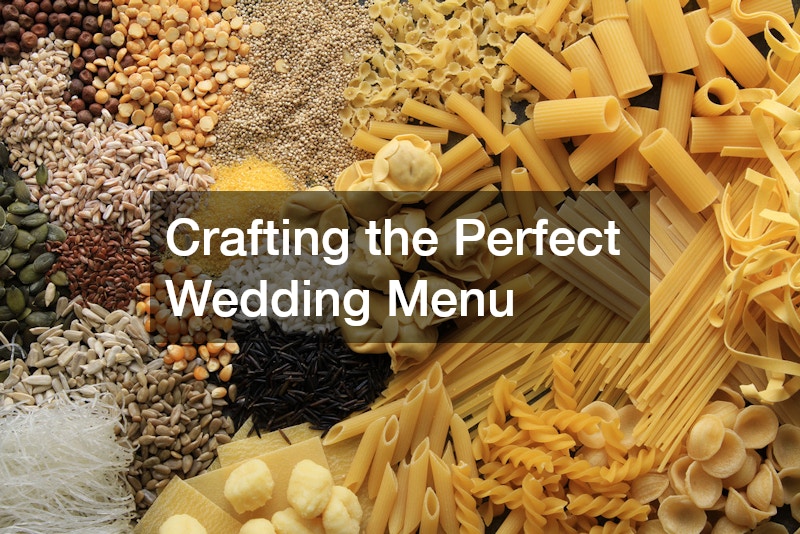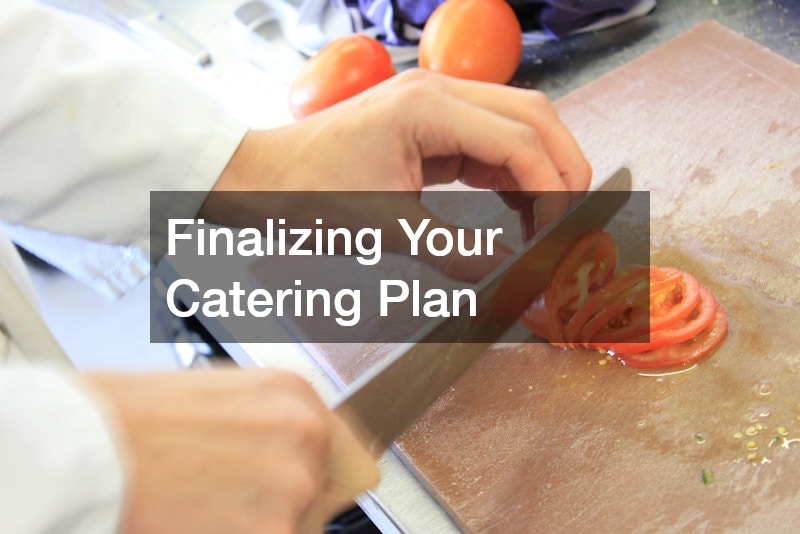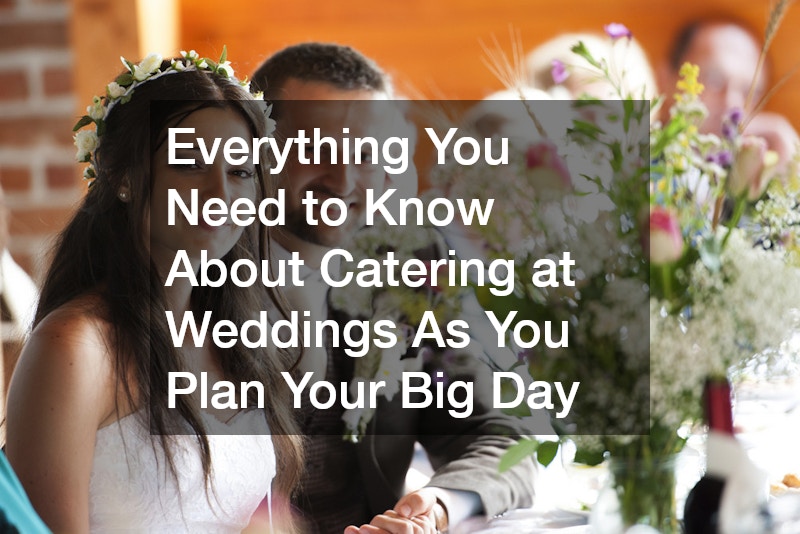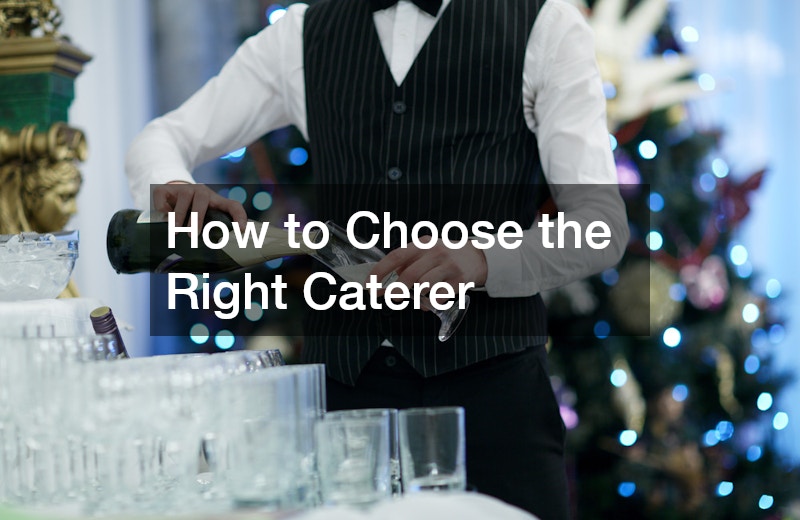Planning a wedding can be an exciting yet overwhelming experience after picking out wedding rings, with numerous decisions to make, and one of the most crucial aspects to consider is the catering. The food and drinks you serve set the tone for the entire event, leaving a lasting impression on your guests. Well-planned catering can elevate your wedding and ensure everyone is satisfied. This comprehensive guide covers everything you need to know about catering at weddings, from understanding catering styles to menu planning and budgeting.

Why Wedding Catering Matters
Food is an essential part of any celebration, and at a wedding, it becomes even more significant. Your wedding day is a personal and intimate occasion, and the food you serve reflects your personality, style, and the mood you want to create. Exceptional catering can make your event memorable for all the right reasons, while poor catering choices can overshadow even the most beautiful ceremony.
Good catering involves more than just providing meals; it’s about creating an experience for your guests. Whether you choose a formal sit-down dinner or a more casual buffet, the catering should fit the overall theme and ambiance of your wedding. Be sure to consider whether you can bundle catering with luxury portable restrooms at your wedding venue!
Types of Wedding Catering Styles
Before you start browsing through menus for catering at weddings, you’ll need to decide on the catering style that best suits your wedding. Here are the most popular options:
Plated Sit-Down Dinner
A plated dinner is a formal catering style where guests are seated, and waiters serve pre-selected meals directly to the tables. Typically, guests choose from two or three options (such as chicken, beef, or vegetarian) before the wedding, or there may be a set menu for everyone. This option is ideal for couples who want a traditional and elegant feel to their wedding reception.
Pros:
- Elegant and refined presentation
- Allows for portion control, reducing food waste
- Excellent for formal weddings
Cons:
- More expensive due to service staff
- Can be time-consuming
Buffet Style
A buffet allows guests to choose from a variety of dishes and serve themselves. It’s a more relaxed option and offers flexibility in terms of the type and quantity of food. You can even ask your wedding DJ service if they can announce when tables can go get their food! Buffets work well for both formal and casual weddings and can accommodate various dietary restrictions easily.
Pros:
- Offers a variety of food options
- Guests can choose what and how much they want
- Cost-effective due to fewer servers needed
Cons:
- Can lead to long lines
- Some guests may find it less formal
Family Style
Family-style catering at weddings combines elements of both a plated dinner and a buffet. Large platters of food are placed on each table, and guests serve themselves, passing dishes around as they would at a family gathering. This creates an intimate, communal dining experience.
Pros:
- Encourages interaction among guests
- Blends the best of buffet and plated styles
- Great for a casual, intimate atmosphere
Cons:
- Can be more expensive due to serving large platters
- Tables need to be larger to accommodate serving dishes
Food Stations
Food stations are like mini-buffets spread throughout wedding venues, each offering a different type of food or cuisine. Guests can visit different stations at their leisure and try a variety of dishes. This option is becoming increasingly popular, especially for couples looking to create a fun, interactive experience.
Pros:
- Provides variety and personalization
- Encourages mingling and movement
- Allows for themed or regional food stations
Cons:
- Can require more space and staff
- Potential for long wait times at popular stations
Cocktail-Style Reception
In a cocktail-style reception for catering at weddings, guests are served hors d’oeuvres and small bites throughout the evening, either via trays carried by servers or at designated food stations. There’s no formal meal, but guests can nibble on a variety of appetizers while socializing and dancing. This option works best for shorter receptions or evening celebrations.
Pros:
- Casual and flexible
- Guests can move freely and mingle
- Often less expensive than a full meal
Cons:
- Some guests may expect a full meal and be disappointed
- Requires careful planning to ensure guests eat enough

Crafting the Perfect Wedding Menu
Once you’ve decided on a catering style, it’s time to think about your menu. Your wedding menu should reflect your tastes and the overall theme of your wedding, whether it’s classic, modern, or something in between.
Consider Your Guest List
Think about your guests’ preferences and dietary restrictions. Do you have vegetarian, vegan, or gluten-free guests? Are there cultural or religious considerations that should be taken into account, such as halal or kosher meals? Offering a variety of options ensures that all of your guests feel included and satisfied.
Seasonal and Local Ingredients
Using seasonal and local ingredients not only enhances the quality of your food but can also help reduce costs for catering at weddings. Speak with your caterer about what’s in season during your wedding and how to incorporate these ingredients into your menu. Many caterers also prioritize sustainability, using farm-to-table ingredients that are fresh and ethically sourced.
Signature Dishes and Personal Touches
Incorporating personal touches into your menu can make your wedding even more special. This could mean including a dish from your heritage, a favorite meal you share as a couple, or a signature cocktail named after you. These little details can make your catering feel more intimate and personal.
Pairing Food and Drinks
Pairing the right food with the right drinks can elevate your wedding dining experience. Whether it’s wine with dinner or signature cocktails served during cocktail hour, be sure to offer beverages that complement your menu. You should also hire charter bus rentals so guests are not tempted to drive home after consuming alcohol. Consider offering non-alcoholic options like mocktails for guests who don’t drink.
How to Budget for Wedding Catering
Catering at weddings can be one of the biggest expenses in your budget. The cost of catering depends on various factors such as the number of guests, the type of food served, and the level of service provided. Here’s how to approach budgeting for your wedding catering:
Determine Your Catering Budget Early
Before you start meeting with a catering service, have a clear understanding of how much you’re willing to spend on food and drinks. Wedding experts recommend allocating about 40-50% of your overall wedding budget to catering, including food, drinks, and service fees.
Guest Count and Per-Person Cost
Catering at weddings often involves charging per person, so your guest count will have a significant impact on your total catering cost. If you’re looking to save, consider trimming your guest list or opting for a more casual catering style, such as a buffet or cocktail reception.
Hidden Fees
When budgeting, be sure to account for hidden fees that may not be included in the initial catering quote. These can include:
- Service fees (typically 15-20% of the total bill)
- Costs of event rentals like tables, chairs, linens, and dinnerware
- Bartender and waitstaff fees
- Cake cutting fees (if your caterer is not providing the cake)
- Taxes
Bar Options
The bar is another major component of catering at weddings, and there are several options to choose from:
- Open bar: Guests can order any drink they like, and you cover the full cost. This is the most expensive option.
- Limited bar: You offer a selection of drinks, such as beer, wine, and a couple of signature cocktails.
- Cash bar: Guests pay for their own drinks, though this is generally discouraged as it can come across as less hospitable.
- BYOB: Some venues allow you to bring your own alcohol, which can be a cost-effective option if you buy in bulk.
How to Choose the Right Caterer
Selecting the right caterer is key to ensuring your wedding day goes smoothly. Here are some tips for finding the perfect catering team:
Start Early
Specialists in catering at weddings can book up fast, so it’s a good idea to start looking for one at least 9 to 12 months before your wedding date. This will give you time to meet with several caterers, schedule tastings, and review sample menus.
Ask for Recommendations
If you’re unsure where to begin, ask your venue for a list of preferred caterers, or seek recommendations from recently married friends or family members. An experienced event coordinator can also be a valuable resource for finding reputable caterers in your area.
Review Portfolios and Testimonials
When researching caterers, take a close look at their portfolios and customer testimonials. Check if they have experience with catering at weddings similar to the style and size of yours. If possible, attend a public event they’re catering to, such as a charity dinner or a tasting event, to sample their food.
Schedule a Tasting
A tasting is a crucial part of the selection process. It gives you an opportunity to try the food, review presentation options, and discuss menu customization. During the tasting, pay attention not only to the flavor and quality of the food but also to the caterer’s professionalism and willingness to accommodate your preferences.
Special Considerations for Wedding Catering
Dietary Restrictions and Allergies
With more people adhering to specific diets or having food allergies, it’s essential to work with your caterer to accommodate all of your guests’ needs. Be sure to ask your guests in advance if they have any dietary restrictions, and relay this information to your caterer.
Child-Friendly Options
If children will be attending your wedding, consider offering kid-friendly meal options such as chicken tenders, pasta, or mini pizzas. This ensures that your younger guests are just as satisfied as the adults.
Cake and Desserts
Wedding cakes are a tradition, but they aren’t your only option for dessert. Consider offering a dessert table with a variety of sweets like cupcakes, macarons, or cookies. Some couples also opt for a late-night snack, such as a donut bar or an ice cream cart, to keep the celebration going in your wedding party tent.

Finalizing Your Catering Plan
Once you’ve selected your caterer, it’s time to finalize the details. Here’s a checklist to ensure nothing is overlooked:
- Menu confirmation: Confirm your menu choices, including appetizers, main courses, sides, and desserts. Be sure to consider dietary restrictions.
- Guest count: Provide your caterer with an accurate guest count, usually required 2-4 weeks before the wedding.
- Timeline: Work with your caterer to develop a detailed timeline for the day, including the time food will be served, when the bar will open and close, and any special moments like a cake cutting.
- Staffing needs: Confirm the number of servers, bartenders, and any other necessary staff.
- Contracts: Review and sign all contracts, making sure to understand payment schedules and cancellation policies.
How to Enhance the Wedding Catering Experience
While choosing the right food and drink is essential, there are a few additional elements that can enhance the overall catering experience and leave a lasting impression on your guests.
Presentation Matters
The way food is presented at your wedding can elevate the dining experience, even if you’re working with a modest budget. Beautiful food displays, garnishes, and creative plating add visual appeal to your catering. Talk to your caterer about how they plan to present the food—whether through elegant table settings, decorative food stations, or unique serving styles.
For example, you can work with your caterer to set up themed food stations that align with the style of your wedding, such as rustic wooden displays for a barn wedding or sleek, modern arrangements for a contemporary affair. Small touches, like personalized menus or customized cocktail napkins, can also add a level of sophistication to the presentation.
Timing and Flow of the Event
The flow of your reception is critical to creating a seamless dining experience. Ensure that your catering fits into the schedule and supports the mood of each part of the event. For instance, if you’re having a cocktail hour, make sure there are enough hors d’oeuvres circulating to keep guests satisfied while waiting for the main meal.
During dinner, timing is key—especially for multi-course meals. Work closely with your service for catering at weddings to set up a timeline that allows for a smooth transition between courses without long waits or rushed service. Consider incorporating speeches, toasts, or dances between courses to keep your guests engaged.
Interactive and Fun Food Options
Interactive food options are a great way to engage your guests and make the catering experience more fun and memorable. Food stations where chefs prepare dishes live, such as a sushi bar or a pasta station, can add entertainment value while offering guests the opportunity to customize their meals.
For a more casual or whimsical touch, consider late-night food options like a food truck, taco stand, or make-your-own s’mores station. These can also be a fantastic way to keep the energy up as the evening transitions from dinner to dancing.
Catering at weddings is an essential part of planning your big day. From selecting the catering style that best fits your vision to crafting a menu that reflects your tastes and accommodating your guests’ needs, the right caterer can help bring your dream wedding to life. With thoughtful planning and a reliable catering team, you’ll create a dining experience that will delight your guests and make your wedding unforgettable.


